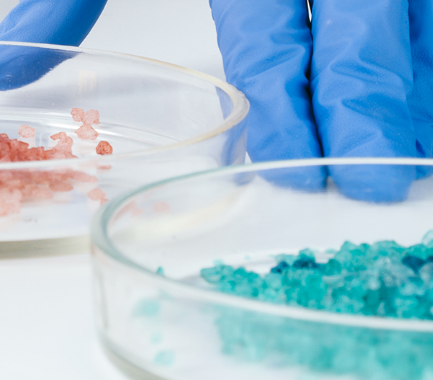Your contact
PENPET-Team - Hamburg

Christoph Meister
Sales
Tel. +49 (0) 40 - 675 7 99 30
sales@penpet.de
Get in touch with us.
Dioctyl adipate (DOA)
Dioctyl adipate (DOA) is an organic compound that belongs to the carboxylic acid esters and is an important plasticizer for the plastics industry, which is used in products made from polyvinyl chloride, among others. The production of the substance is based on the direct esterification of 1-octanol and adipic acid. Natural occurrences of small amounts of the compound include plants such as black salsify and certain bacteria.
As an additive, dioctyl adipate increases the flexibility of plastics. The compound is used as a plasticizer in the production of polyvinyl chloride (PVC), ethyl cellulose and cellulose nitrate, among others. It is found, for example, in garden hoses, sealing rings, cables, food packaging and PVC coatings. In addition, dioctyl adipate is used as a solvent.
At PENPET, you can get dioctyl adipate (DOA) of the highest quality - from a reliable partner who will also meet your requirements in the long term. We look forward to receiving your inquiry for an individual offer. Timely delivery of the liquid can be in bulk in road tankers or containers, as well as in IBC packs and drums of various weights.
CAS no. 103-23-1
EINECS no. 204-652-9
Molecular formula: C22H42O4
Synonyms: DOA, dioctyl adipate, di-n-octyl adipate, dioctyl adipate
Areas of application: Use as a plasticizer for flexible products made of polyvinyl chloride (PVC) and other plastics such as sealing rings, cables, garden hoses and food packaging, use as a solvent
More Information
Dioctyl adipate (DOA) is a double ester of adipic acid, as is clear from the synonymous name adipic acid dioctyl ester. The center of the compound is formed by the remainder of the adipic acid, the terminal carboxylic acid groups of which have been esterified during production with the hydroxyl groups of two molecules of the alcoholic 1-octanol. The symmetrical dioctyl adipate thus has two ester groups, each of which is followed by a regular and unbranched octyl radical.
With its two functional groups, dioctyl adipate can undergo the typical reactions of an ester. These include acid-catalyzed hydrolysis and saponification with a base, which restores the original octanol and forms a salt of adipic acid. The solubility of the substance is determined by the long, non-polar octyl chains. Despite the slightly polar ester groups, dioctyl adipate is therefore only poorly soluble in polar solvents such as water.
Under normal conditions, dioctyl adipate (DOA) is a colorless or slightly yellowish liquid that has a viscous, oily consistency and is rarely volatile. The compound has only a very faint, slightly greasy odor of its own. Dioctyl adipate already changes to a molten state with slight cooling and solidifies below a temperature of 7.5 °C. The boiling point is 405 °C. Dioctyl adipate is not readily soluble in water. Due to its lower density, the liquid settles floating on top of the water.
Dioctyl adipate (DOA) is very stable and can be safely stored under normal conditions. However, violent and dangerous reactions can occur with strong oxidizing agents. The substance is flammable but difficult to ignite. Carbon dioxide, carbon monoxide and other harmful gases are released during the thermal decomposition and combustion of dioctyl adipate.
According to the GHS criteria, dioctyl adipate (DOA) is not classified as a hazardous substance. However, the compound can be irritating on direct contact and cause redness and painful irritation on the skin and eyes. Affected body areas should be rinsed thoroughly with water. After contact with the eye, an ophthalmological examination must be arranged. Due to possible damage to aquatic organisms, dioctyl adipate is considered to be slightly hazardous to water and should not be released into the environment. If the compound leaks into the ground, water bodies or waste water, the responsible authorities must be informed immediately.
